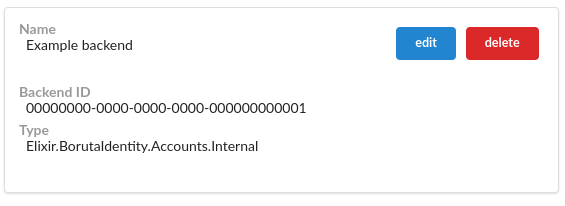Backends configuration
Backends act as user registries storing user related information for a better management. They use a configurable identity source to keep identities safe but accessible for a better management. On top of that it gives enhanced abilities to those users like custom attributes or email confirmation.
Architecture
For each client you can configure a specific identity provider, that will be associated to a backend, helping to provide both authorization and authentication for them. This way, each client will have a custom interface as mean of authentication for the end-users.

Have a look at client configuration
Have a look at identity provider configuration
Configuration
Backends configuration helps to select associated user registries, means of credential storage along with enhanced features for them. Those are to keep credentials and identities while providing them abilities helping manage authorization and authentication provided by identity provider interfaces.
Manage through User Interface
The Administration interface gives the ability to create, update and delete backends. Backends are listed through the Identity providers > backend list section in the sidebar menu.

Manage through API
All client operations are accessible through a REST API following the below description. All client management endpoints are protected with a Bearer token that can be obtained with any OAuth flow. In order to get access, you need to have an access token with the private scope backends:manage:all granted.
Have a look at the TODO - API documentation
Navigation
- Top level configuration - General configuration
- Backend type - Type
- Sending emails - Email configuration
- Federating identities - Identity federation
- Issuing / Verifying Verifiable Credentials - Verifiable credentials
- Custom user attributes - User metadata